ALPACA all-sky images from Paranal available in the Archive
Summary
ALPACA - ALL-sky Paranal Apical CAmera is an all-sky camera at the Paranal Observatory. ALPACA supports the nigh-time science operations imaging the visible sky to monitor the sky condition. ALPACA images the sky 400-700 nm spectral window with a 95% transmission, using a gSENSE detector with a quantum efficiency with a 60% quantum efficiency at 600 nm. Its detector consists of a 7kx7k pixel array of 9 micrometers in size (update: was upgraded in October 2023 from the original 4k x 4x). These characteristics allow a high angular resolution in the imaging of the sky above Paranal (of order ~ 7arcmin/pixel). These and other specifications are listed in Table 1.
Exposure time could be auto adjusted depending on sky background brightness if required. Experience shows that with Moon halo images of 300+ seconds exposures are adequate. Currently, the data acquisition has been set to get 2 minutes exposure images with a cadence of 2 minutes and few seconds. The images are stored in FITS format. Keeping a standard exposure ensure a more stable condition for subsequent post-processing and analysis.
ALPACA comes with an enclosure that covers and protects the camera (Plexiglas hemispheric protection and camera system) from dust and weather during daytime. The camera operates from astronomical evening twilight, all through the night until the end of the astronomical twilight in the morning.
The data can be retrieved from the Archive main raw interface, selecting ALPACA as the instrument in the "Other" category.
An example of an ALPACA all-sky image is shown in Figure 3.
Location
As to maximize the all-sky image down to the horizon, ALPACA has been located towards the south end of the VLT platform and away from the tall UT enclosures. Views of the setup are shown in Figure 1 and Figure 2.
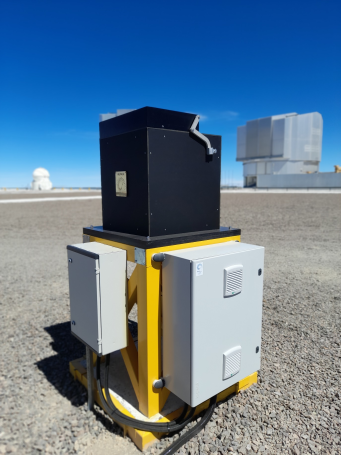
Figure 1 ALPACA setup. The all-sky camera optics and mechanical stages are all inside the black enclosure. The camera cover is the one on top, this opens automatically at the beginning of astronomical twilight each evening. The cabinet on the right side of the picture is where all the camera power, electronics are found. The cabinet on the left is where the power and optical fibre for ethernet communication, from Paranal, is supplied.
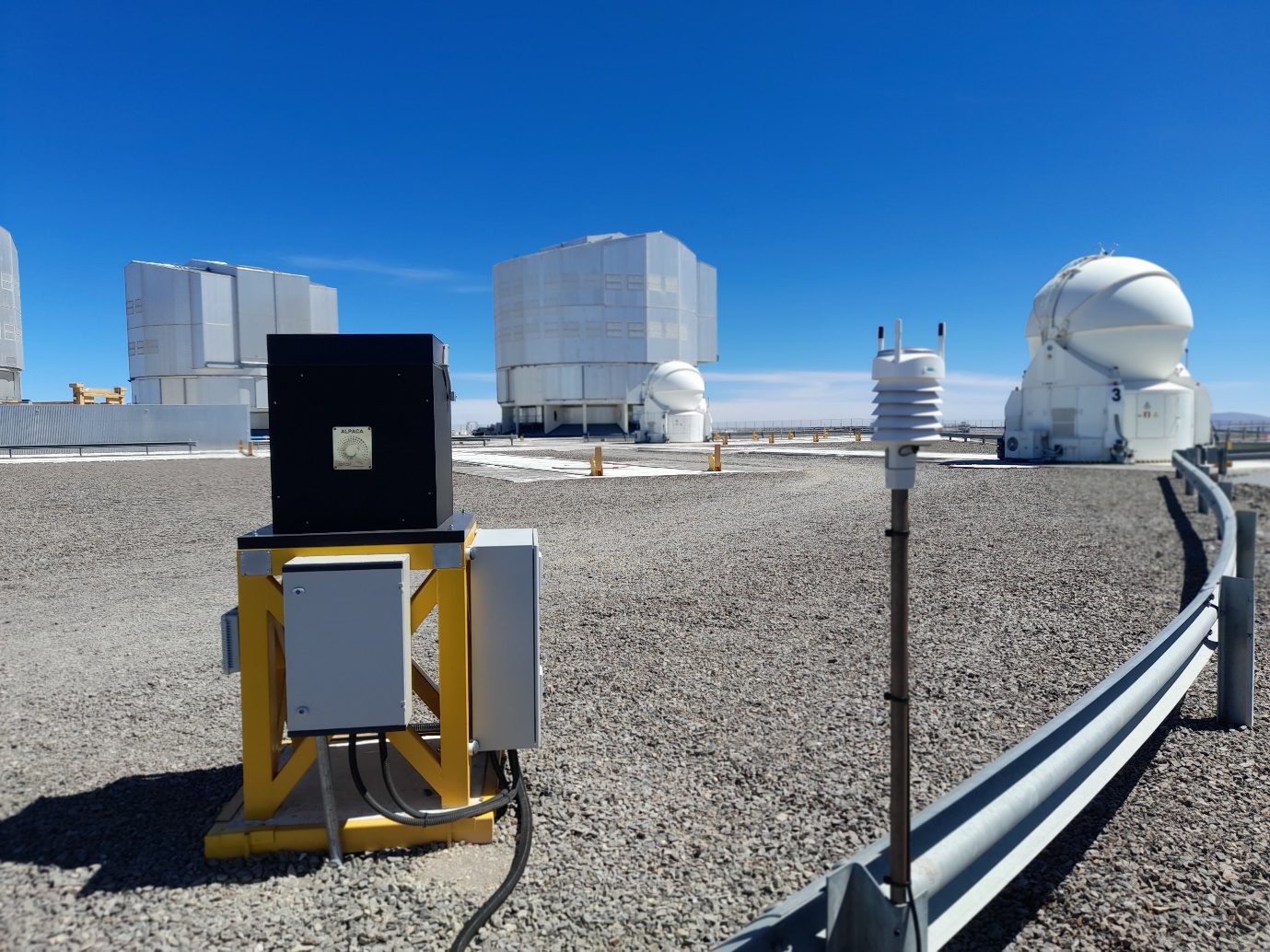
Figure 2 ALPACA setup view. A Vaisala weather station has been installed next to ALPACA for the continous monitoring of weather conditions. Under critical weather conditions (high wind and/or precipitation) the ALPACA cover closes to keep the camera system protected from the adverse weather.
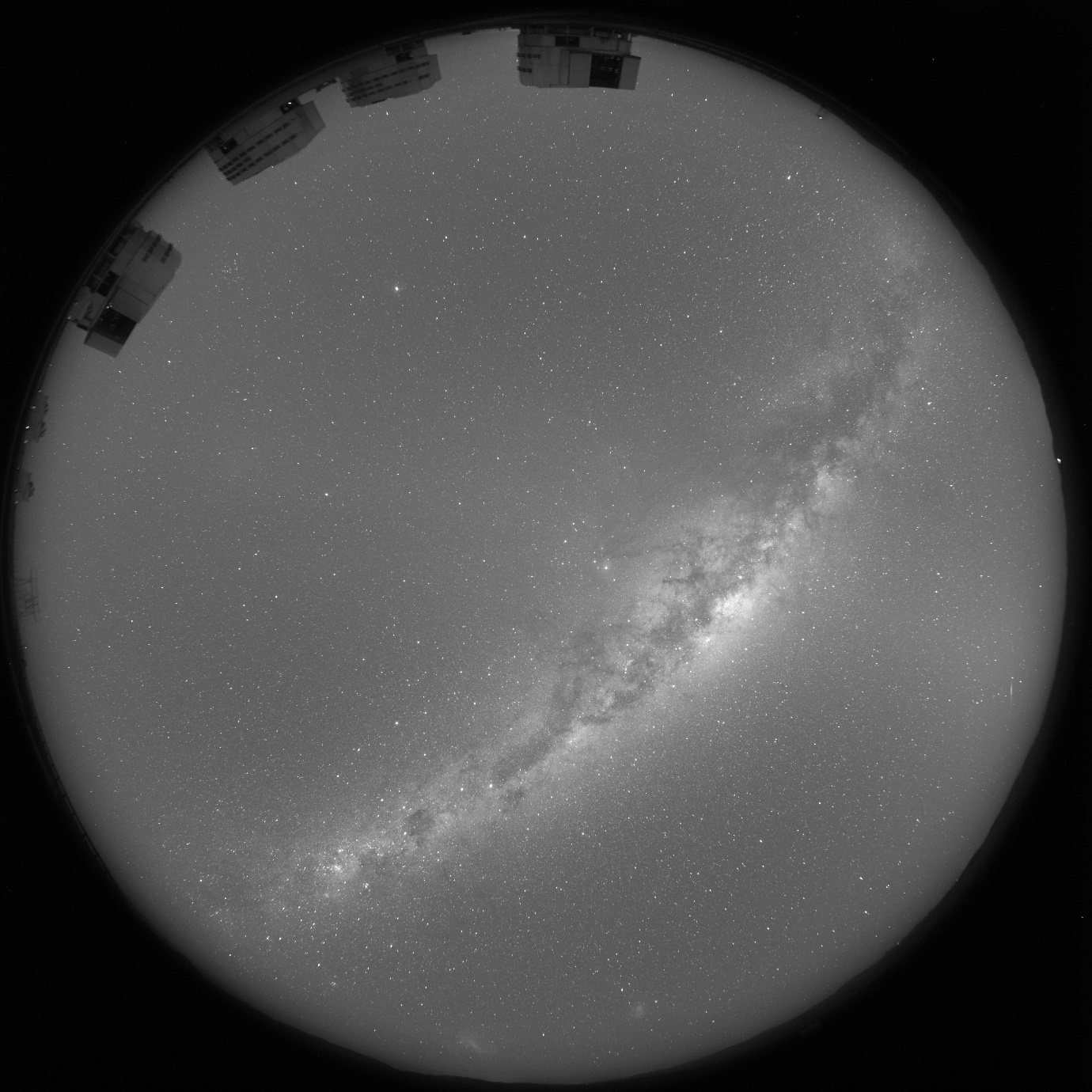
Figure 3 ALPACA all-sky image example (north is UP, East is right)
Manufactured by:
ALPACA was designed and built at APICAL Technologies
Avenue Jean Jaures
ZAC de l'Agavon - Synergiparc n°6
13170 Les Pennes Mirabeau
Software
ALPACA comes with a software, ESKYMO, for the post-processing of each of the images. ESKYMO can identify, with support of catalogue and process the data to provide a good evaluation of atmospheric extinction. ESKYMO therefore delivers:
- Star extinction measurements in magnitudes (in patches of 5 x 5 degrees on the sky)
- Sky brightness evaluation (in the zenith direction)
The post-processing of the all-sky images includes the subtraction of images. This subtraction can help better identify the following: clouds and their general motion direction, upper atmosphere (mesosphere-level) airglow and gravity waves, satellite passes (when illuminated by the sun during the twilight time and into the first part of the night) and perhaps even the crossing of shooting stars (meteoroids). Examples of these are shown in Figure 4, Figure 5, Figure 6.
Note: The subtraction images, and other by-products foreseen from the post-processing of the ALPACA all-sky images, as for now, are only going to be available to support the science observations in the VLT's control room starting in the second half of 2023.
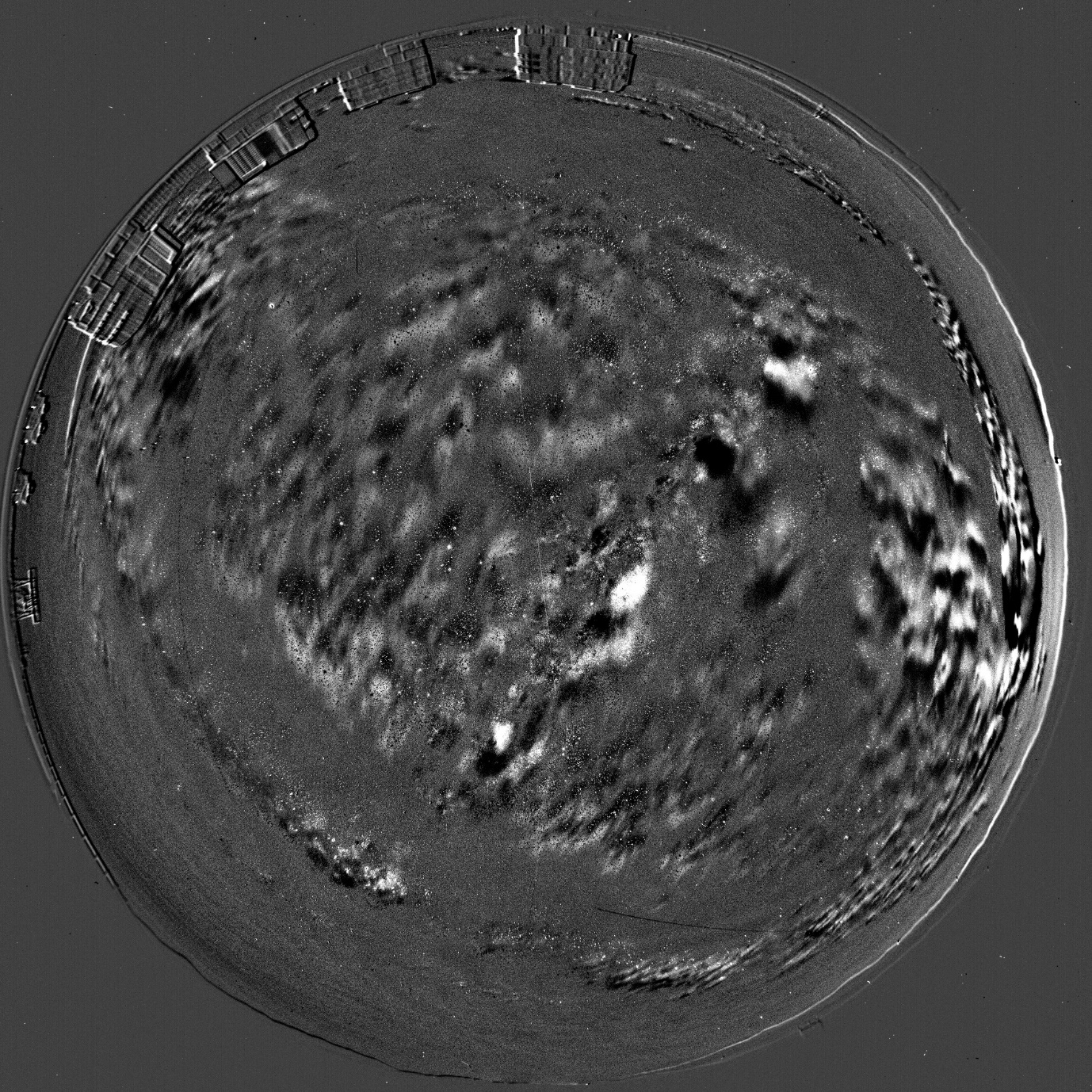
Figure 4 ALPACA image substraction example: clouds detection
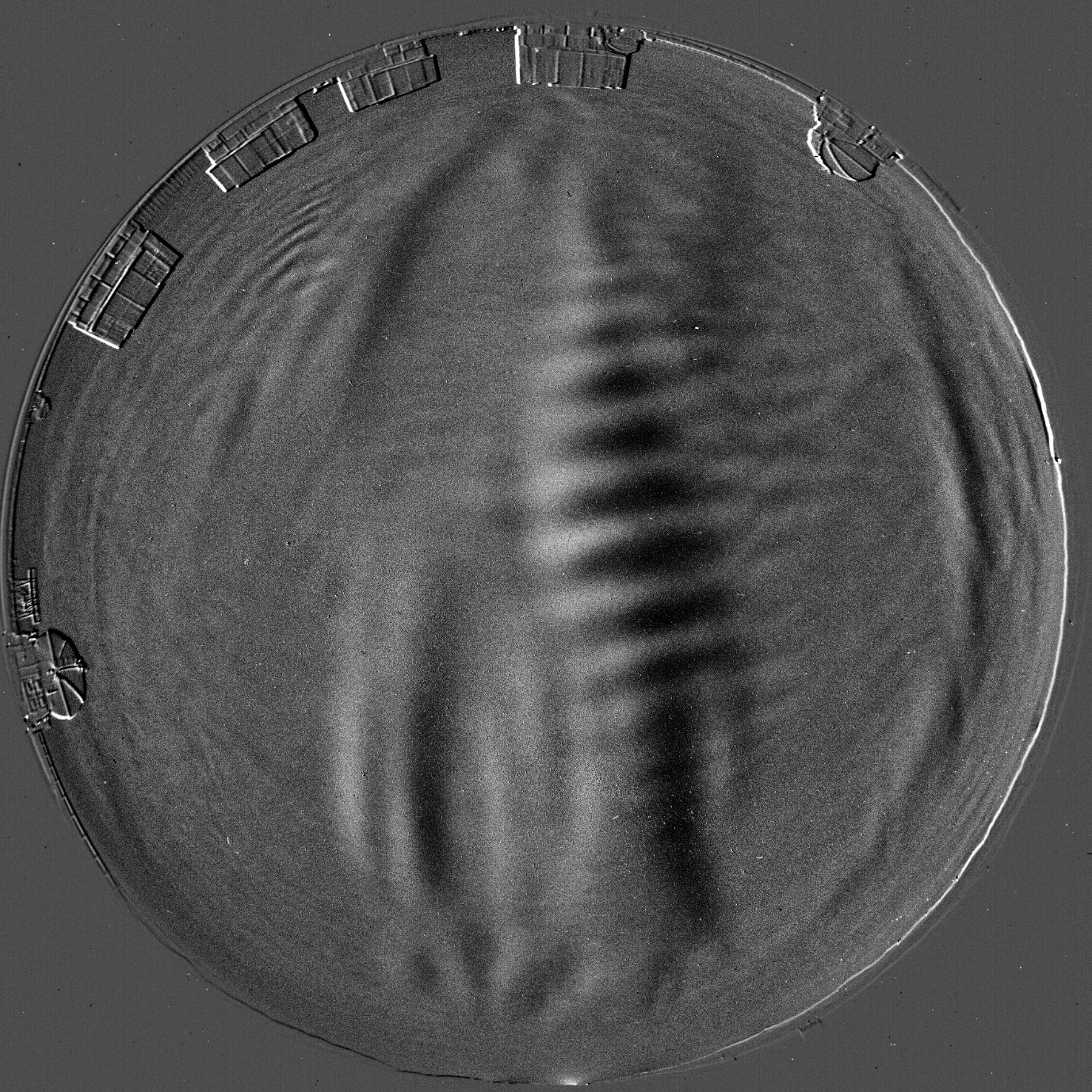
Figure 5 ALPACA image substraction example: airglow and/or gravity waves in the mesosphere
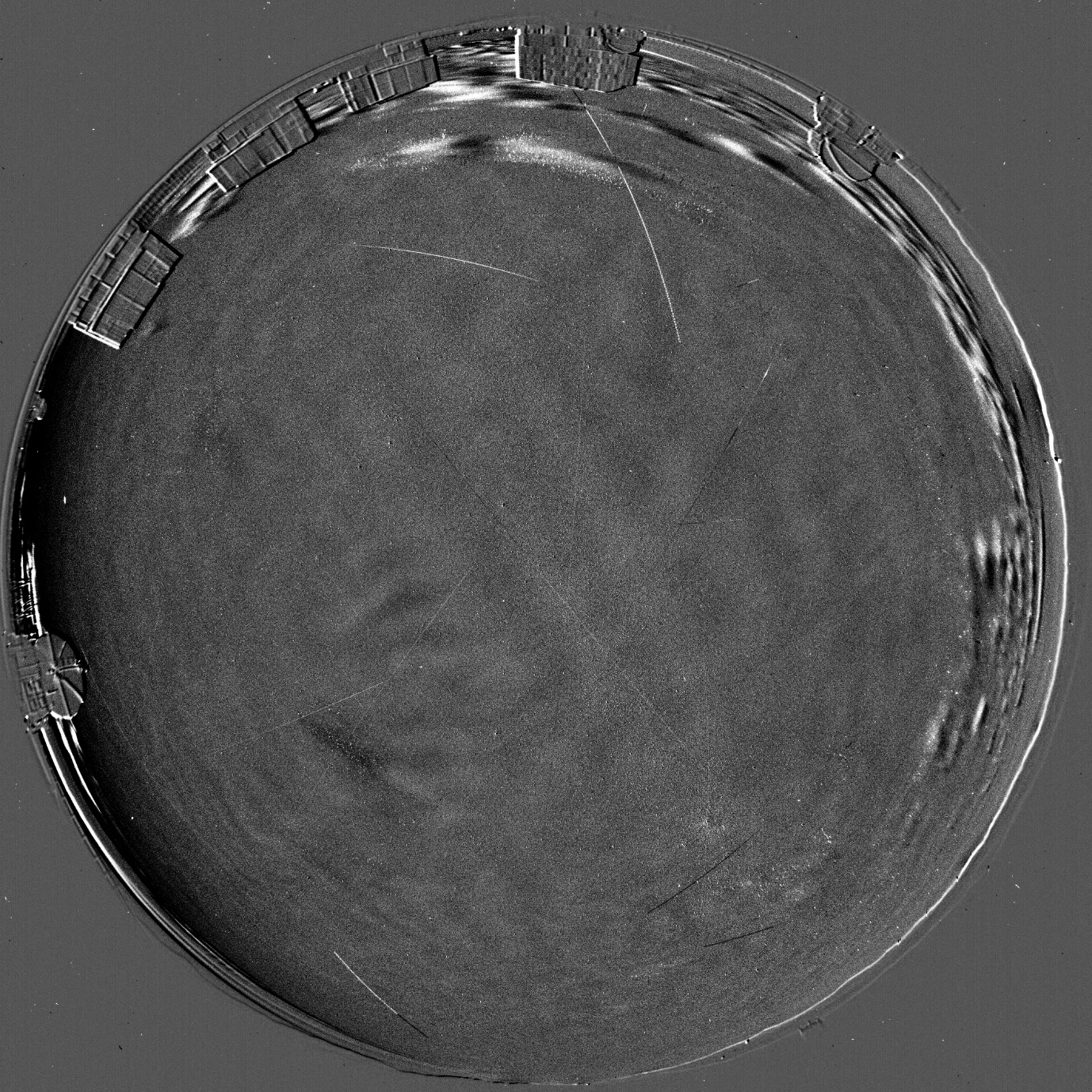
Figure 6 ALPACA image substraction example: satellites (when illuminated by the sun) as well as meteoroids crossing
Table 1 ALPACA All-Sky Camera Technical Specifications
| Specifications | ALPACA |
|---|---|
| Sky coverage | 360x180 |
| Detector type | gSENSE |
| Detector model | 4040 |
| Pixel size | 9 µm |
| Pixel array size | 4096x4096 |
| Detector size | 36.8 x 36.8 mm |
| Pixel ang. resol. | 7 arcmin/pix |
| Q.E. % | 50% at 600 nm |
| Bitpix | 16 bits HDR |
| Lens brand | Canon |
| Lens: F. Length | 12mm |
| Image Format | FITS |
| Weather/dust proof | Yes Comes with a mech./automatic deployed cover |
| Condensation | Active thermal control |
| Filter wheel | Yes |
| Filter Wavelength Range | 400-700 nm |
| Filter transmission | 95% |
| Sky tracking (mechanical) | Yes |
| Exp time | 120s |
| Clouds Imaging | Yes |
| Clouds detection | Via sky extinction |
| Clouds tracking | Via differential imaging |
| Sky extinction map | Yes |
| Extinction 1-σ | 0.03 mag/arcsec2 |
